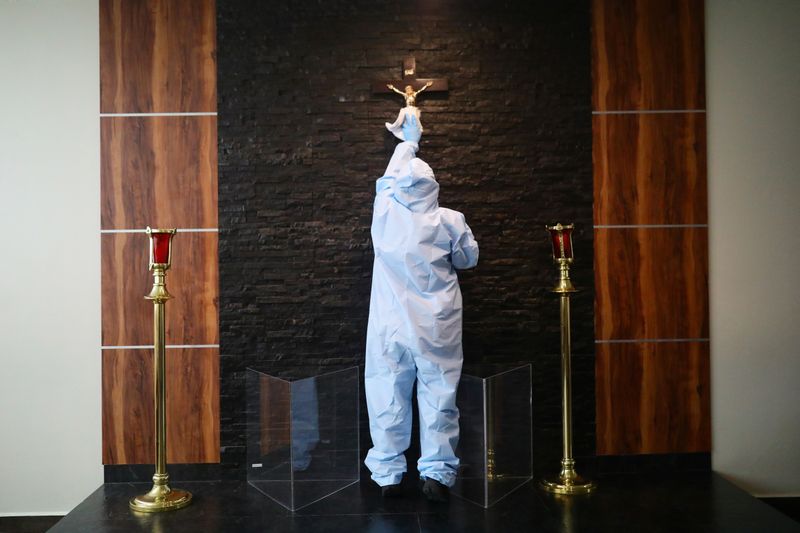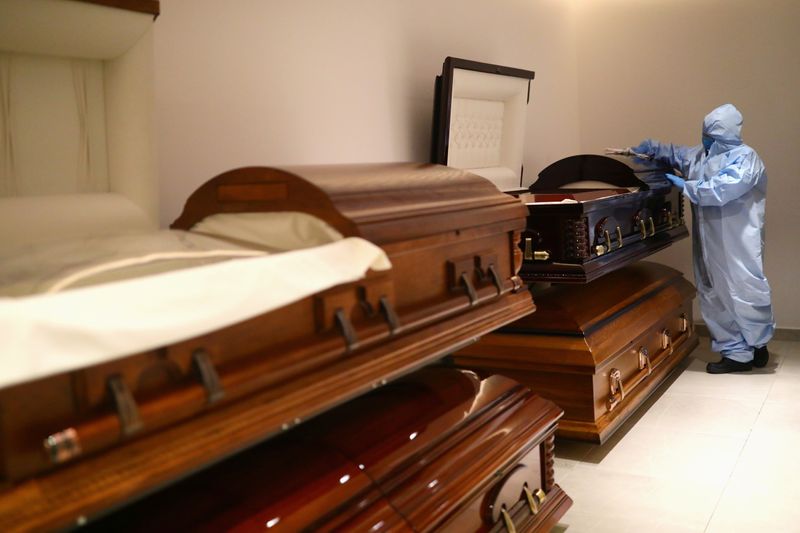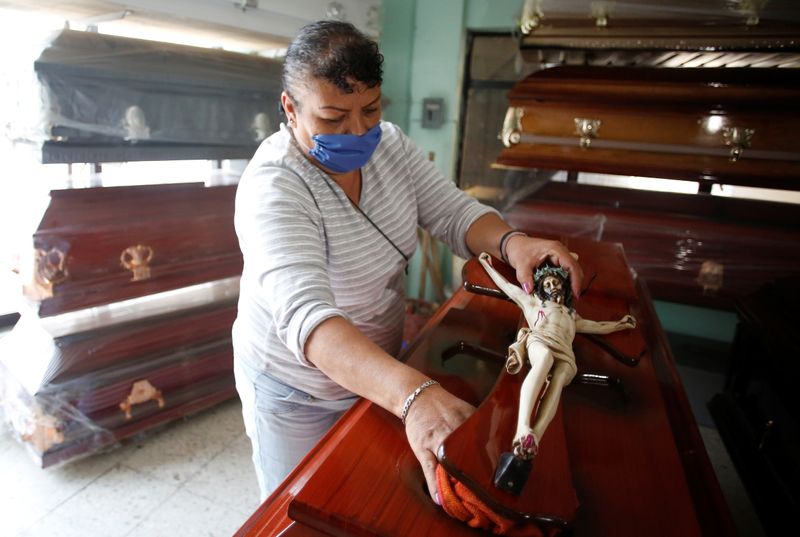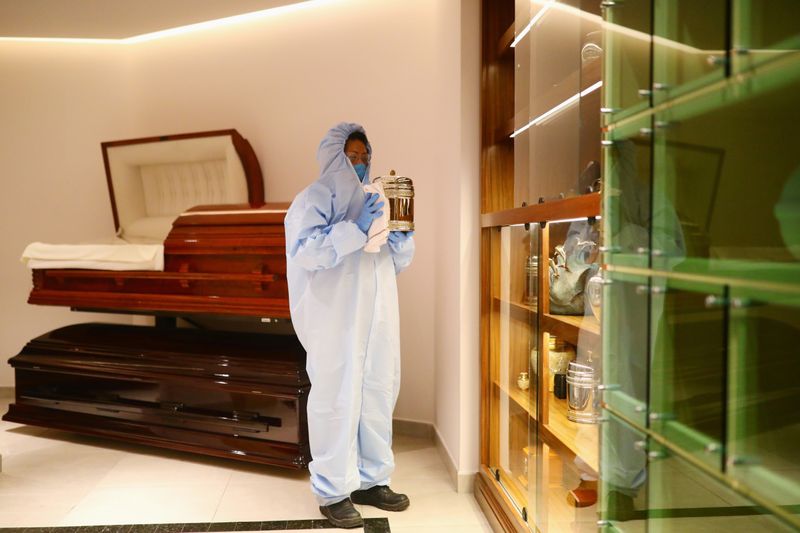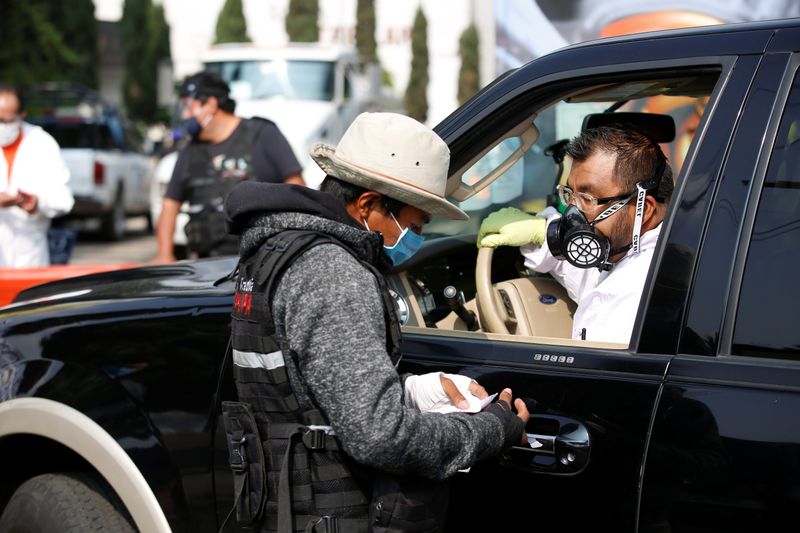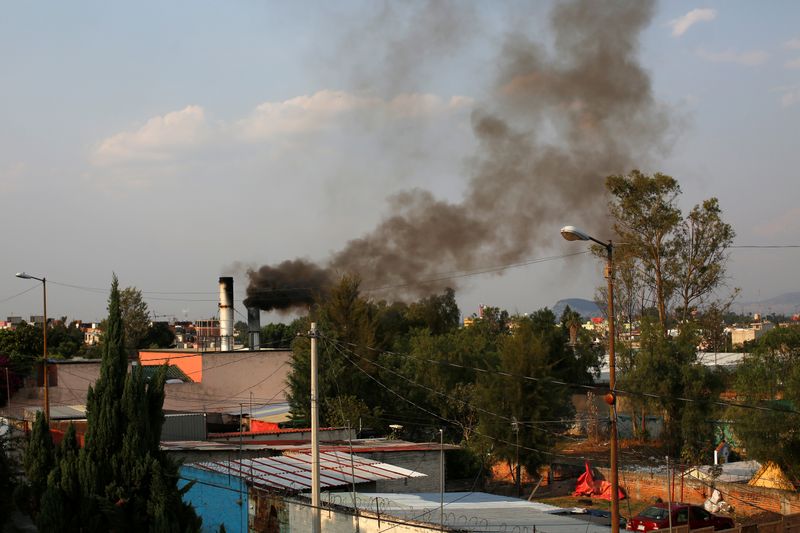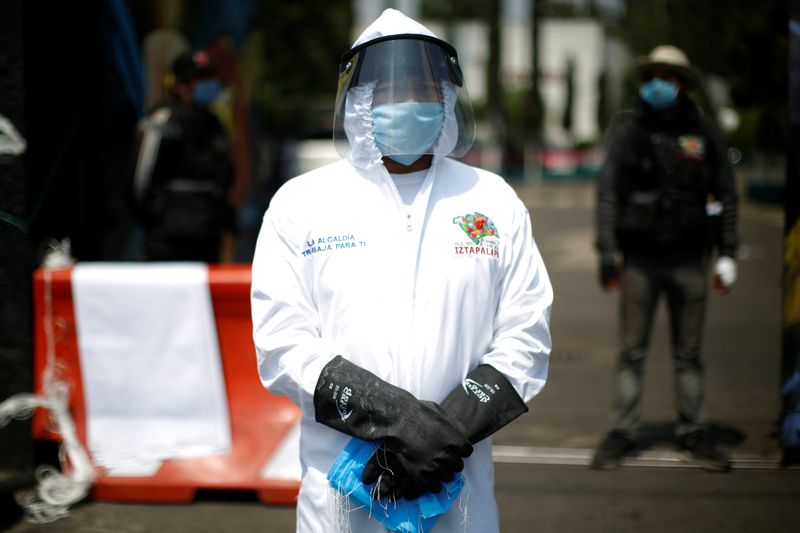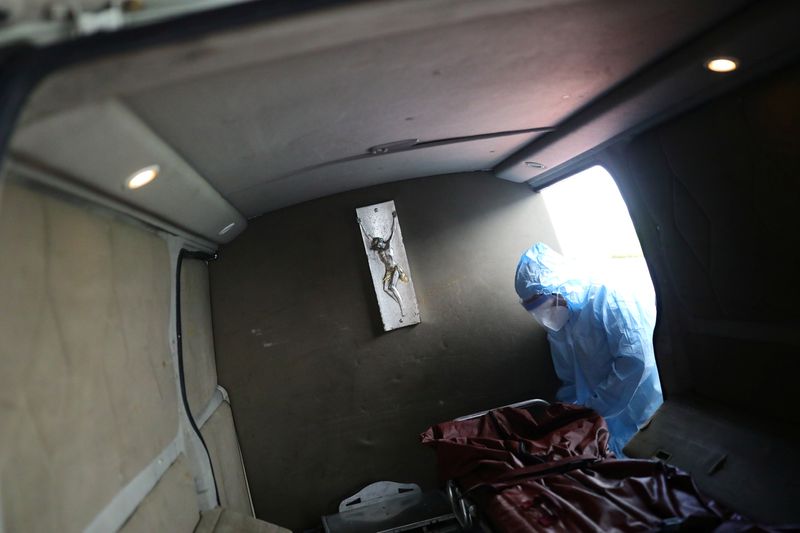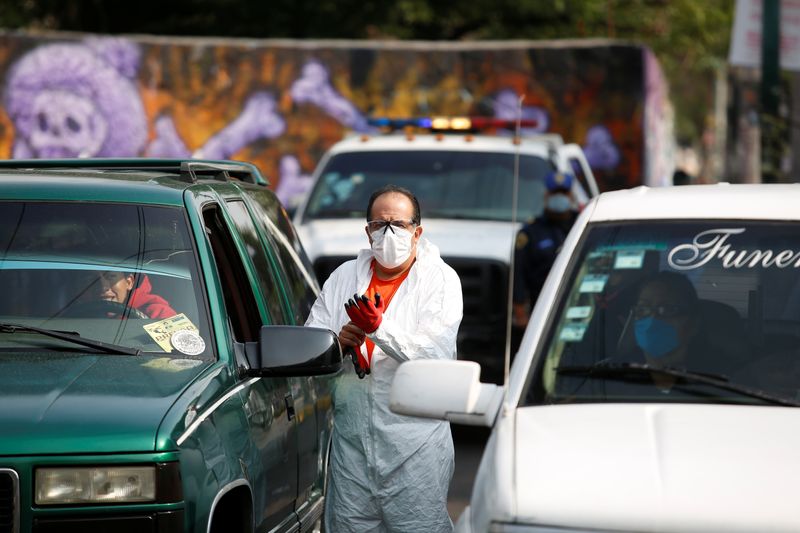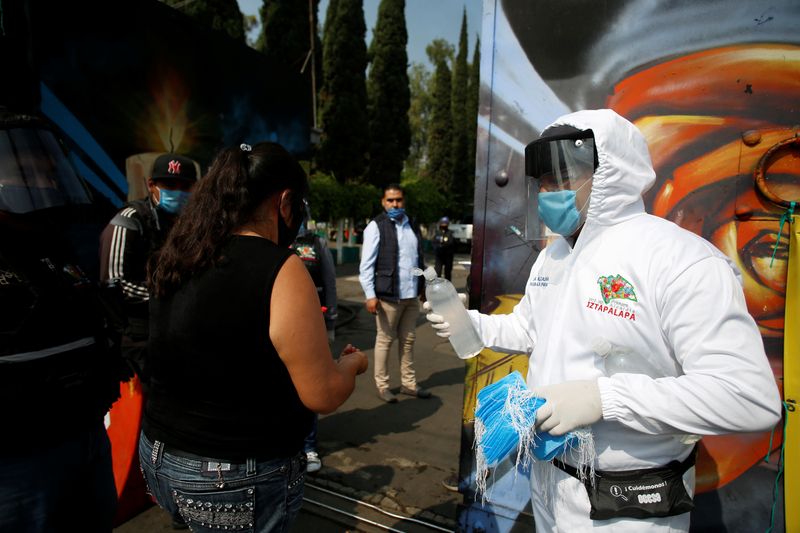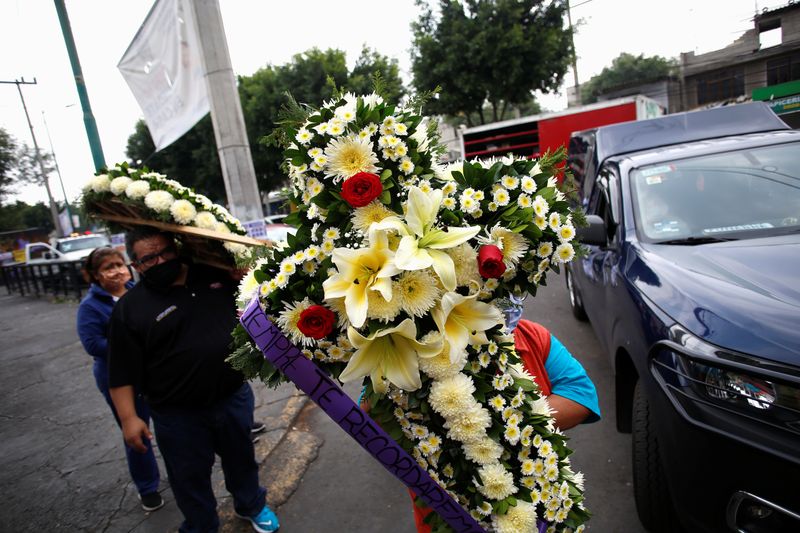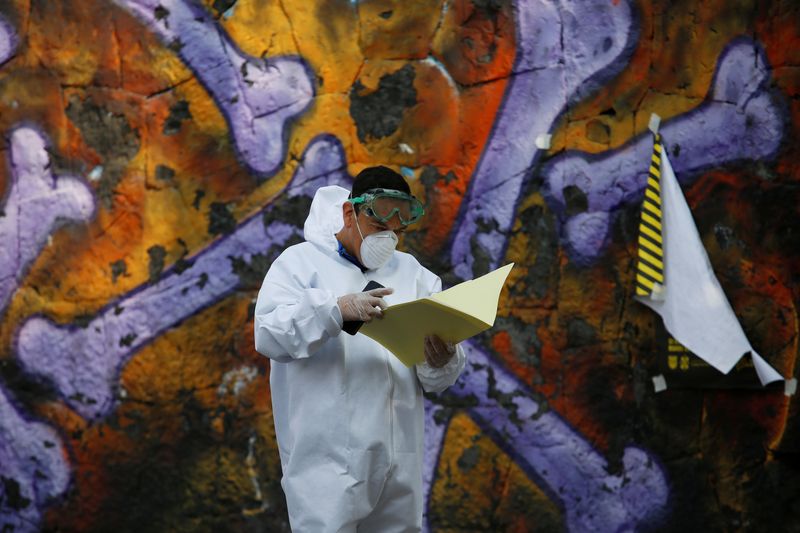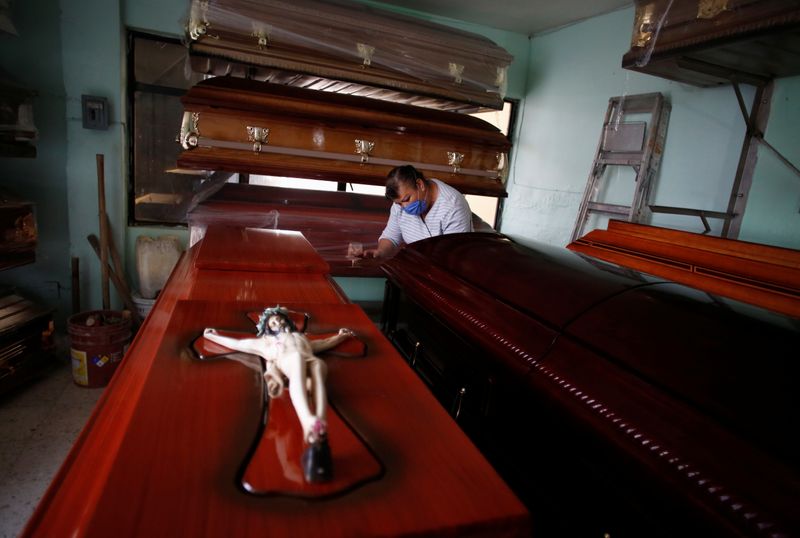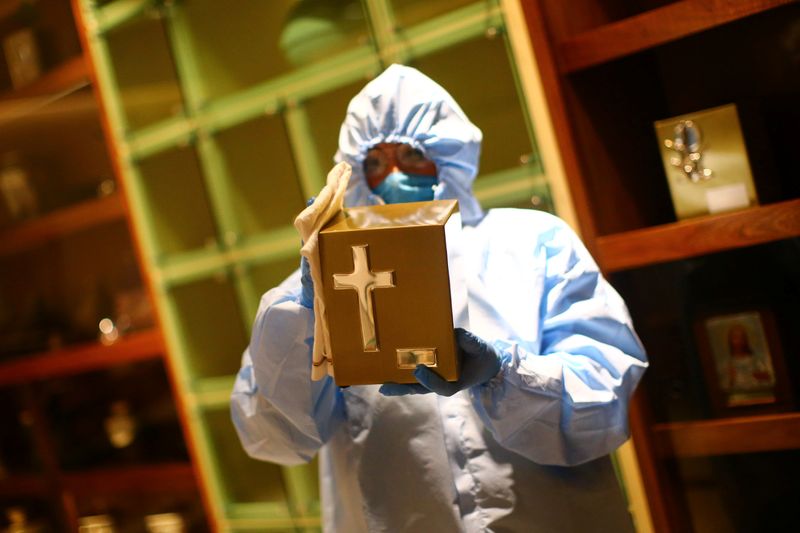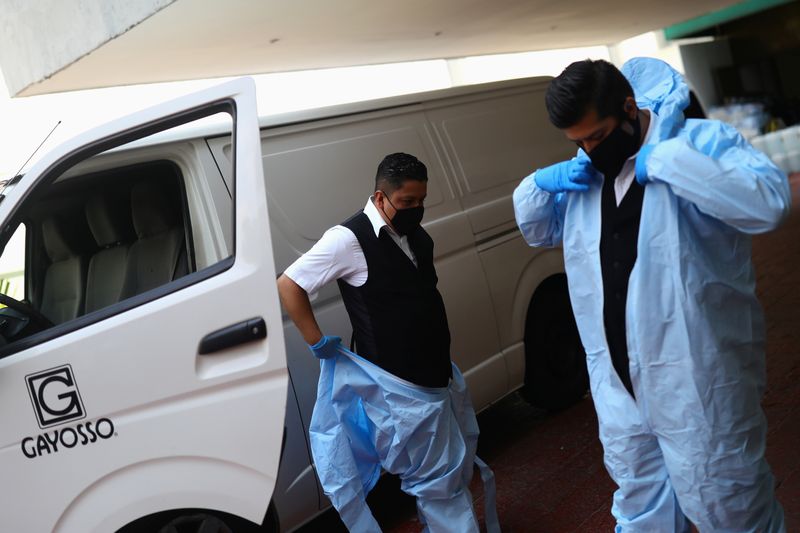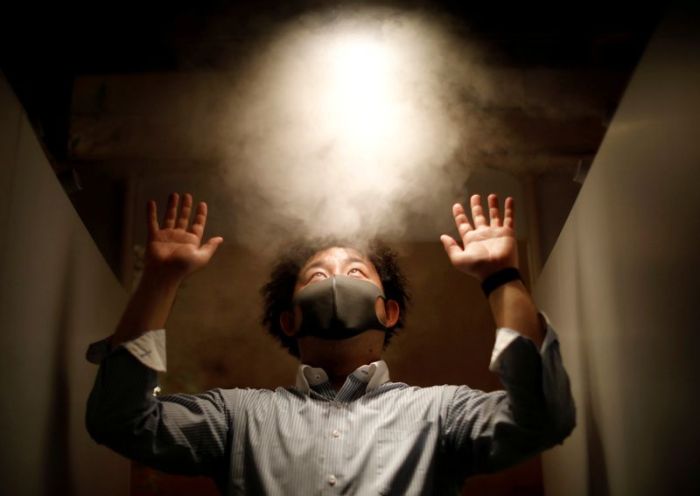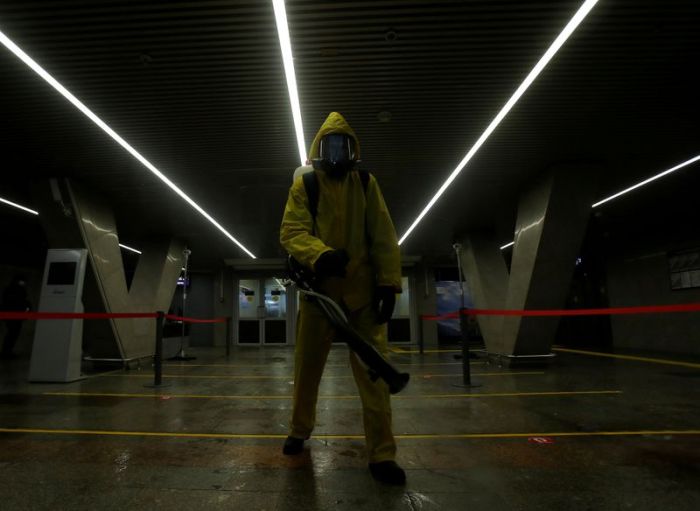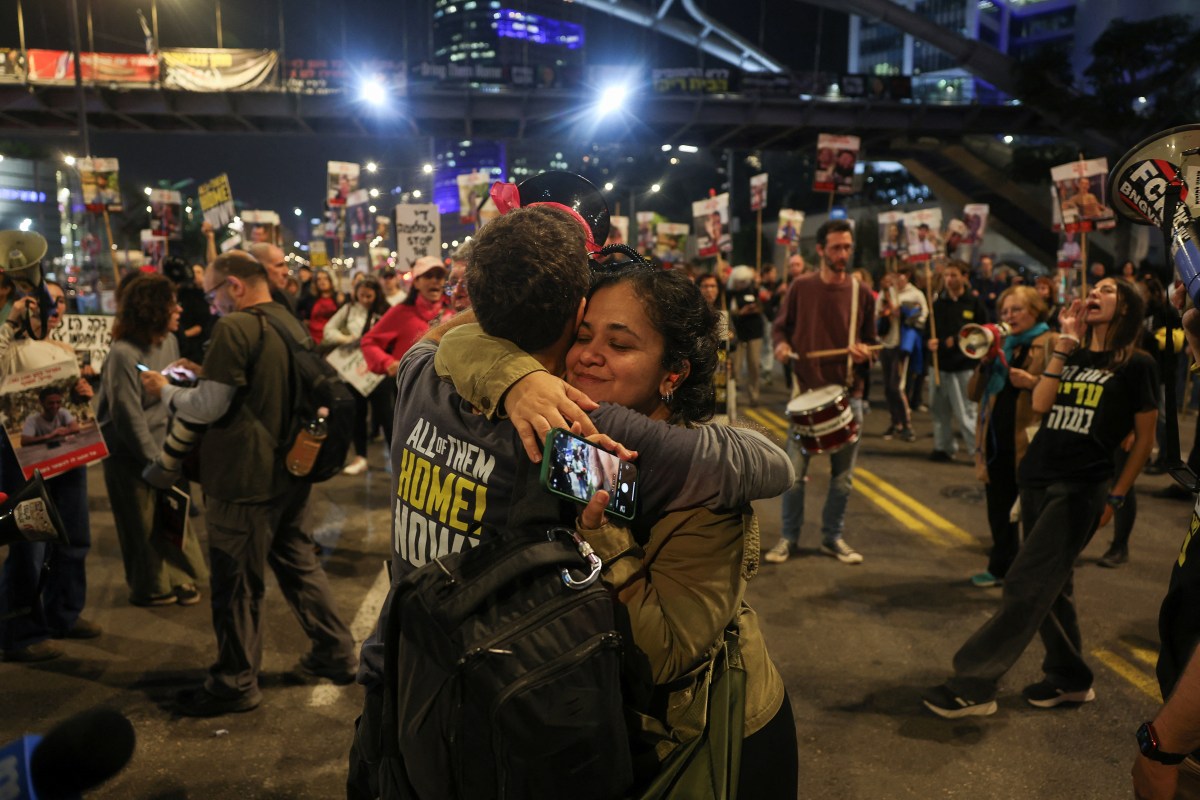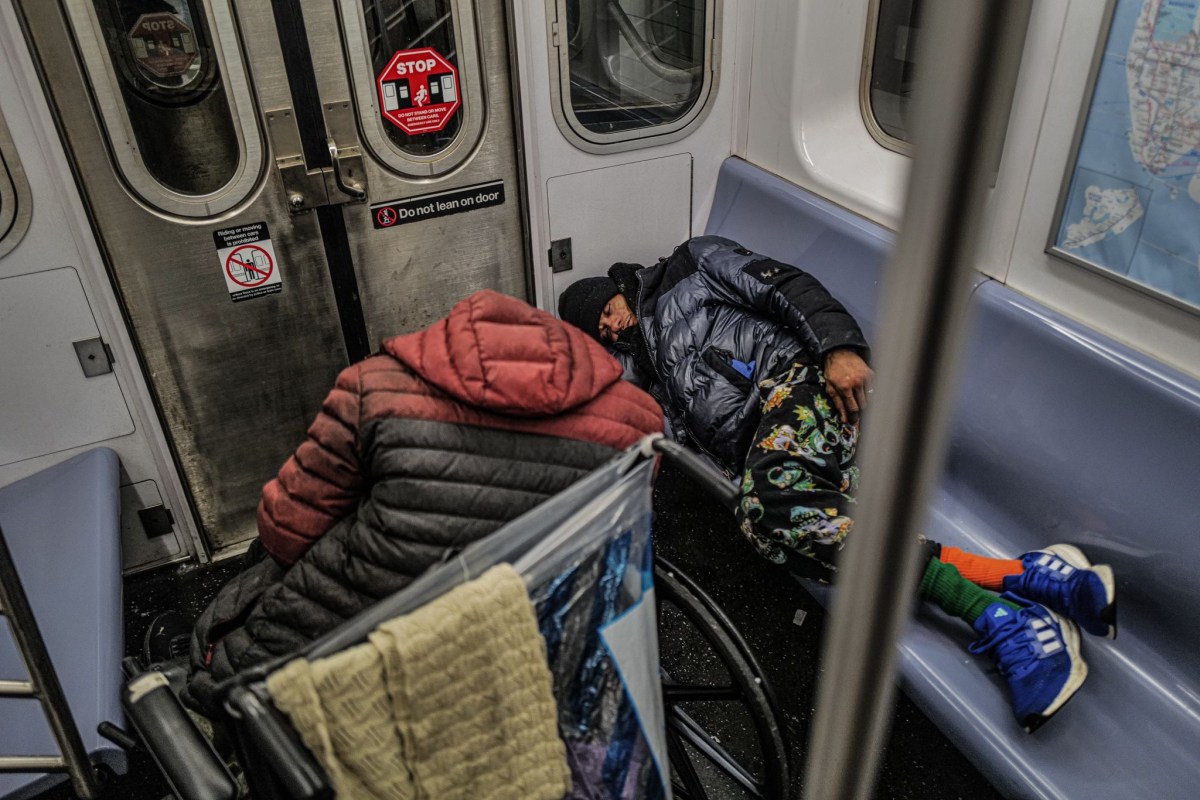MEXICO CITY (Reuters) – Like many people around the world, Mexican funeral home owner Salvador Ascencio did not believe at first the coronavirus outbreak was going to be a big deal.
Then calls from grieving relatives began to pour in.
During the first 11 days of May, his small funeral parlor in a run-down part of Mexico City dealt with 30 bodies, a more than four-fold spike in daily funeral services compared to the same period last May.
“I have never experienced a situation like this,” said Ascencio, 52, encircled by shiny wooden coffins in the cramped parlour of a business his family has operated since 1973.
“The truth is that what we are experiencing is horrific.”
Reuters surveyed 18 funeral homes and crematoriums across the capital, including several belonging to Mexico’s two biggest chains. They also reported rocketing demand for their services during the pandemic.
The findings suggest that official statistics in Mexico may be far underestimating the true death toll from COVID-19, the disease caused by the new coronavirus.
Mexico’s government has acknowledged that the real number of fatalities is higher than the official tally of 5,666 coronavirus deaths nationwide, though it says it has limited tools to measure accurately how much higher because Mexico has the lowest testing rate among OECD countries.
Hugo Lopez-Gatell, Mexico’s coronavirus tsar and deputy health minister, said earlier this month in response to media reports about Mexico undercounting fatalities that people often arrive at hospital too sick for a timely laboratory test.
The federal government has also acknowledged there is sometimes a lag between coronavirus deaths and their inclusion in daily official figures due to delays in certifying deaths and processing information from hospitals and morgues.
Complicating efforts to estimate the true impact of the pandemic, Mexico has no real-time statistics on deaths nationwide: the most recent published mortality data is from 2018.
That makes it difficult to calculate ‘excess mortality’: a term used by epidemiologists to estimate the increase in deaths, versus normal conditions, attributable to a public health crisis.
Based on information from 13 funerals homes in the capital belonging to Mexico’s two biggest chains, the excess mortality rate in the first week of May could be at least 2.5 times higher than the government’s official coronavirus tally during that period, according to Reuters calculations.
While death rates could vary according to neighborhoods and over time, infectious disease specialist Alejandro Macias, an academic and Mexico’s national commissioner for influenza during the H1N1 swine flu pandemic, was explained the news agency’s findings and said a calculation of more than twice the announced number of deaths sounded about right.
“In these times, saying double doesn’t sound too much to me,” said Macias, adding that it may be “even a little bigger.”
One of the funeral home chains, J. Garcia Lopez, told Reuters it had registered a 40% increase in funeral services in early May in Mexico City compared to last year and was handling an average of 50 fatalities per day. The other chain, Grupo Gayosso, saw a 70% spike.
Based on the last three years for which mortality data is available, Mexico City saw an average of 6,048 deaths in May between 2016 and 2018, or a daily rate of 195 deaths.
Taking the more conservative J. Garcia Lopez funeral data as a guideline, a 40% increase in deaths would equate to an average of 273 people dying daily in the capital in the first week of May – equivalent to an additional 78 deaths per day above the average of 2016-2018.
That would be roughly two and a half times the government’s official COVID-19 death tally in Mexico City, published on Monday, of 32 fatalities per day in the first week of May.
Excess mortality figures are a recognized means of determining the impact of a pandemic, he said, adding Mexico’s “severe underestimation” of the death toll did not indicate a conspiracy by the government to suppress numbers. “It’s a consequence of not doing enough tests,” Macias said.
Data from funeral homes and death registries has contradicted official coronavirus death tolls in other nations across the globe, including in Italy and Indonesia.
Although the Reuters estimate was only an approximation, it was broadly in line with a survey of death certificates by Mexican non-profit MCCI published this week that found three times as many confirmed, probable or suspected COVID-19 deaths.
Asked by Reuters about its findings and whether the death toll could be significantly higher than officially reported, a spokesman for the Mexico City government, Ivan Escalante, said a scientific commission established last week by the local authorities to bring more transparency to the pandemic death numbers would seek to determine that, including by examining suspected cases.
Officially, 1,108 people had died from the coronavirus in Mexico City by Monday. Mexico on May 12 reported its most lethal day yet with 353 coronavirus fatalities.
OVERFLOWING MORGUES
In the Izaz Cremaciones crematorium in Iztapalapa, the epicenter of Mexico City’s outbreak, black smoke billowed from chimneys last week whenever a coronavirus victim was cremated. The thicker smoke was due to extra layers of plastic wrapped around the bodies, workers said.
Izaz cremated 239 people in the first 11 days of May, compared with the 188 people it cremated during the whole of May last year. The increase was due in part to the government advising cremation for all suspected coronavirus cases.The company has introduced 24-hour shifts to operate its two crematorium ovens.
More than a third of Izaz’s cremations at the start of the month were confirmed or “probable COVID-19” cases, according to death certificates in the crematorium registry.
Funeral home J. Lopez Garcia also said more than a third of the daily cases in the same period were “COVID and/or atypical pneumonia.”
Workers using hearses to ferry the bodies of coronavirus victims to crematoriums around the capital have taken on the look of astronauts, sheathed in hazmat suits and gas masks.
“We had to call almost seven crematoriums to find a space,” said Francisco Juarez, whose family run a funeral business on the other side of Mexico City from Izaz.
“It’s something I’ve never seen, the hospitals are full,” he said. “The areas holding the bodies are now completely filled up.”
The surge in demand for funeral services has coincided with many public hospitals overflowing. By Monday evening, 47 of 64 hospitals in the Mexico City metropolitan areas were full and 13 were near capacity, government data showed.
Figures from Grupo Gayosso, which operates 21 funeral homes in 13 cities, point to rising coronavirus deaths elsewhere in the country too.
In the northern border cities of Tijuana and Mexicali, they more than doubled, said Alejandro Sosa, the chain’s operations director.
Ascencio said he keeps receiving calls from people who suspect their relatives have been killed by the coronavirus.
If the toll keeps rising, he said, he won’t be able to handle them all because the city does not have enough facilities to cremate the bodies of the victims, he said.
“Unfortunately, there are not enough ovens,” Ascencio said.
(This story has been refiled to change to ‘Macias’ from ‘he’ in paragraph 20 to establish who is being quoted)
(Reporting by Drazen Jorgic; Editing by Frank Jack Daniel and Daniel Wallis)

